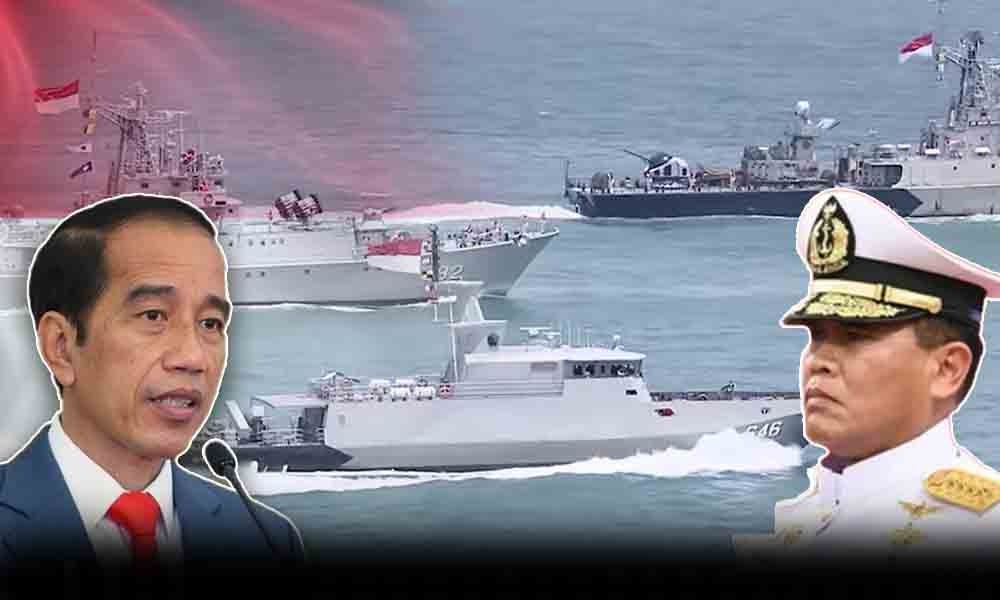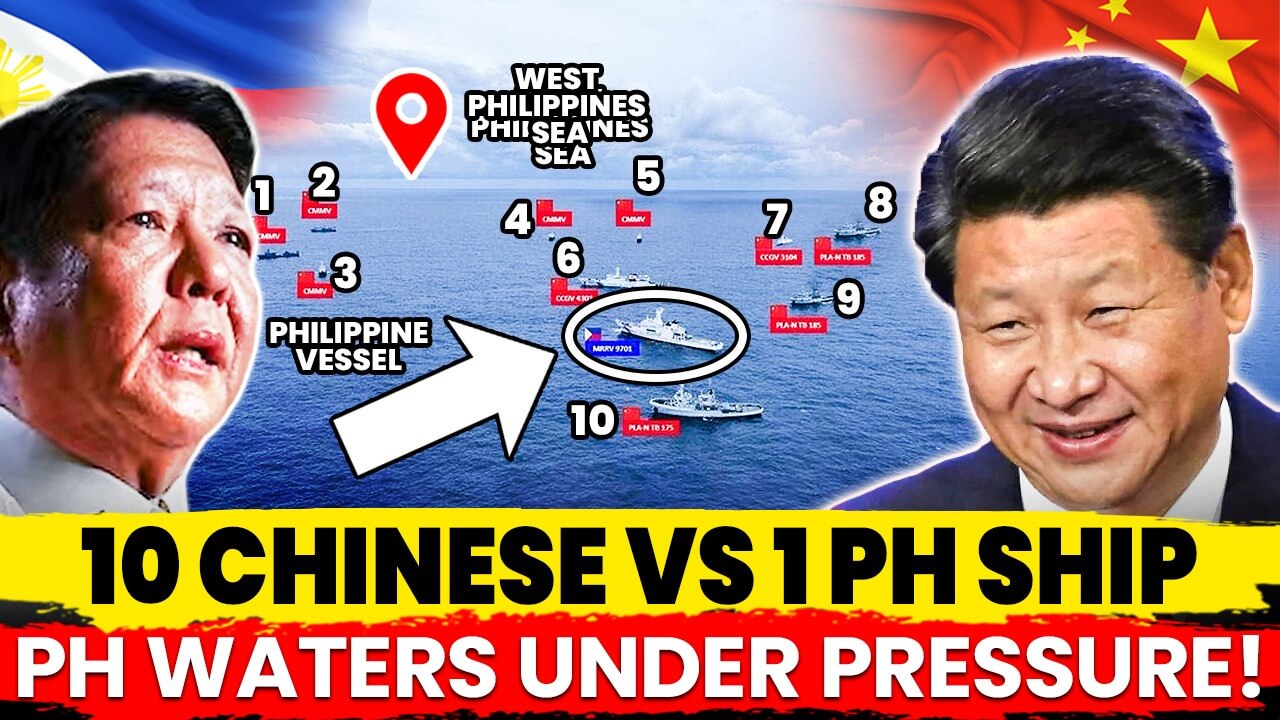Indonesia, the world’s largest archipelagic nation with over 17,000 islands, holds a strategic position at the intersection of some of the world’s busiest shipping lanes. However, despite its vast maritime domain and status as Southeast Asia’s largest country, It remains significantly under-resourced in naval defense. This leaves its economic and security interests exposed, especially in an increasingly competitive regional landscape.
Looking back into history, this grim reality was sharply exposed in the aftermath of the devastating 2004 tsunami. A magnitude 9.8 earthquake off Java’s coast overwhelmed it’s ability to respond to the crisis. The nation that should have been at the forefront of relief efforts instead had to rely on foreign intervention, with the U.S. Navy leading the charge. It was a sobering display of Indonesia’s naval inadequacies, and yet two decades later, little has changed. The 2021 sinking of the KRI Nanggala-402, an aging submarine, reinforced the grim reality that Indonesia’s naval capabilities remain alarmingly insufficient in the face of rising maritime threats.
As Indonesia confronts the growing strategic importance of the Indo-Pacific region, particularly the South China Sea, its naval weakness presents a profound dilemma. China’s naval ascendance is reshaping the regional balance of power, and Indonesia’s sluggish efforts to modernize its fleet threaten to leave it dangerously exposed. In an era where naval power is once again a decisive factor in geopolitics, Indonesia’s failure to develop a capable maritime force has grave consequences for its sovereignty and standing in Southeast Asia.
Comparative Naval Landscape:
Indonesia’s naval challenge becomes even more pronounced when compared to the capabilities of other regional powers. With a defense budget of approximately $9.3 billion in 2023, Indonesia’s military spending pales in comparison to neighboring Singapore, which spends roughly $11 billion annually despite its much smaller size. Singapore’s navy is considered one of the most advanced in Southeast Asia, featuring modern vessels such as the Formidable-class frigates and Independence-class littoral mission vessels. In contrast, Indonesia’s navy still largely relies on aging platforms like the Ahmad Yani-class frigates, which have been in service since the 1980s.
When considering the larger regional picture, China’s naval dominance looms large. The People’s Liberation Army Navy (PLAN) is not only the largest in the region but also the fastest-growing in the world. As of 2023, the PLAN holds over 350 ships, including aircraft carriers, nuclear-powered submarines, and an increasing number of amphibious assault ships. This massive fleet dwarfs Indonesia’s navy, which, by contrast, operates just 160 vessels, many of which are outdated or in need of an overhaul. China’s increasing naval power, backed by its nearly $230 billion defense budget, serves as a stark reminder of the growing imbalance in the region.
Even Malaysia, which spends just over $4 billion annually on defense, maintains a more modern and capable fleet relative to its size. Malaysia has invested in modern corvettes, submarines, and frigates, providing it with a more balanced naval posture compared to Indonesia’s largely outdated fleet. Additionally, Vietnam’s naval capabilities are enhanced by its acquisition of Russian-made Kilo-class submarines and Gepard-class frigates, further pinpoints Indonesia’s backwardness in maritime modernization.
Indonesia’s Maritime Modernization: The MEF and Beyond
Recognizing the need for modernization, Indonesia launched the Minimum Essential Force (MEF) plan in 2010, aimed at revitalizing the country’s defense capabilities across all military branches. The MEF outlined a phased approach to achieving a basic level of defense readiness by 2024, with a specific focus on enhancing the navy’s capacity to defend Indonesia’s extensive maritime borders.
However, progress under the MEF has been slow and uneven. While there have been notable acquisitions, such as the purchase of Makassar-class landing platform docks (LPDs) and Sigma-class corvettes, the overall state of the Indonesian Navy remains inadequate for the challenges it faces. The sinking of the KRI Nanggala-402, an aging German-built submarine, highlighted the vulnerabilities that persist within Indonesia’s fleet. The tragic loss of the 53 crew members aboard the Nanggala was not only a national tragedy but also a stark reminder of the dire need for further investment in modern naval platforms.
As of 2024, Indonesia has fallen short of the MEF’s original goals. The fleet still lacks the advanced capabilities needed to deter potential aggressors, particularly in the South China Sea, where tensions over territorial claims are escalating day by day. Indonesia’s navy is still heavily reliant on older vessels, many of which are nearing the end of their operational lifespans. The ongoing challenge of maintaining and upgrading these vessels, coupled with a limited defense budget, has hampered efforts to achieve a credible deterrent posture.
New Strategies and Policy Shifts
In response to these challenges, the Indonesian government signaled a shift in its approach to naval modernization. President Joko Widodo’s administration placed a renewed emphasis on maritime security, encapsulated in the “Global Maritime Fulcrum” policy, which aimed to position Indonesia as a key player in the Indo-Pacific region. This policy framework highlighted the importance of developing a robust maritime defense capability, particularly in light of the strategic challenges posed by China’s assertiveness in the South China Sea.
In 2022, Indonesia announced plans to allocate a larger portion of its defense budget to naval modernization, with a focus on acquiring new submarines, frigates, and patrol vessels. The government also sought to strengthen partnerships with countries such as South Korea and Japan to facilitate technology transfers and joint naval exercises. These collaborations are seen as crucial to enhancing Indonesia’s maritime domain awareness and improving its ability to safeguard its territorial waters.
One key area of focus is the acquisition of additional submarines to replace aging vessels like the KRI Nanggala-402. Indonesia currently operates just four submarines, a number that is woefully insufficient for a nation with such vast maritime interests. By comparison, Vietnam, with a significantly smaller coastline, operates six modern Kilo-class submarines. Indonesia’s goal is to increase its submarine fleet to at least 12 by 2030, a target that will require sustained investment along with international partnerships.
In addition to expanding its submarine fleet, Indonesia is also pursuing the acquisition of more advanced surface vessels. The planned purchase of Iver Huitfeldt-class frigates from Denmark, which are equipped with state-of-the-art radar and missile systems, is a significant step in this direction. These frigates would provide Indonesia with a much-needed boost in anti-aircraft and anti-submarine warfare capabilities, enabling it to better defend its maritime borders.
Strategic Implications of Regional Naval Dynamics:
Indonesia’s naval modernization efforts are taking place in a rapidly evolving regional security environment. The South China Sea remains a flashpoint for potential conflict, with China continuing to assert its expansive territorial claims through the construction of artificial islands and the deployment of military assets in the disputed waters. For Indonesia, which maintains a neutral stance on the territorial disputes but has faced incursions by Chinese fishing vessels into its exclusive economic zone (EEZ), the need for a capable navy is more important than any other military hardware.
The dynamics in the Indo-Pacific have also been influenced by the growing presence of external powers such as the United States, Australia, and Japan. The formation of security initiatives like the Quad—comprising the U.S., Japan, India, and Australia—signifies the region’s strategic importance and the increasing emphasis on maritime security cooperation. Indonesia’s role in this evolving landscape will depend in large part on its ability to develop a credible naval presence that can contribute to regional stability.
Comparatively, Indonesia lags behind countries like Japan and Australia in terms of naval capabilities. Japan’s Maritime Self-Defense Force (JMSDF), with its sophisticated Aegis-equipped destroyers and Izumo-class helicopter carriers, is one of the most advanced navies in the region. Australia, too, has made significant strides in naval modernization, with its ongoing acquisition of Hunter-class frigates and the construction of new submarines under the AUKUS pact. While Indonesia is unlikely to match the naval capabilities of these countries in the near future, it must prioritize the development of a modern and capable fleet to protect its national interests.
The Path Forward: Addressing Indonesia’s Naval Deficit
To address its naval deficit, Indonesia must adopt a multi-faceted approach that goes beyond acquiring new hardware. The country’s naval strategy must also focus on improving operational readiness, enhancing maritime domain awareness, and strengthening regional partnerships.
First, Indonesia needs to invest in the maintenance and upgrade of its existing fleet. Many of the country’s ships are in dire need of modernization, with outdated radar, missile, and communication systems that reduce their effectiveness in modern naval warfare. Upgrading these systems will extend the operational lifespans of these vessels and ensure that they can continue to serve as a deterrent against potential aggressors.
Second, Indonesia must enhance its maritime surveillance capabilities. Given the vast size of its maritime domain, the country needs to develop a comprehensive maritime domain awareness (MDA) framework that integrates satellite, aerial, and surface-based surveillance systems. This will enable Indonesia to better monitor its territorial waters and respond to incursions more effectively.
Lastly, Indonesia should continue to strengthen its regional and international partnerships. Joint naval exercises with countries like the United States, Australia, and Japan provide valuable opportunities for the Indonesian Navy to improve its operational capabilities and learn from more advanced naval forces. These partnerships also send a strong signal to potential adversaries that Indonesia is committed to defending its maritime interests in cooperation with like-minded nations.
End Note
Indonesia’s naval modernization is not just a matter of national security; it is central to the country’s broader geopolitical ambitions in the Indo-Pacific region. As Southeast Asia’s largest and most populous nation, Indonesia has a critical role to play in shaping the region’s security architecture. However, without a capable and modern navy, Indonesia risks being sidelined in the increasingly competitive and contested waters of the Indo-Pacific.
The challenges Indonesia faces in modernizing its navy are significant, ranging from budgetary constraints to political inefficiencies and regional power imbalances. Yet, the opportunities are equally compelling. By investing in its naval capabilities, Indonesia can better protect its maritime domain, contribute to regional stability, and assert its sovereignty in the face of growing external pressures.
The road to naval modernization will not be easy, but it is a path that Indonesia must take if it is to fulfill its potential as a maritime power. The stakes are high—not just for Indonesia, but for the broader Indo-Pacific region. As naval power becomes an increasingly important factor in global geopolitics, Indonesia’s ability to build a modern and capable navy will be crucial to securing its future in this dynamic and strategically vital region.
In the years to come, it’s success in this endeavor will be measured not only by the number of ships and submarines it acquires but also by its ability to integrate these capabilities into a coherent and effective maritime strategy. With the right investments, partnerships, and policy reforms, it can overcome its naval paradox and emerge as a formidable maritime power, ready to defend its interests and contribute to the stability of the Indo-Pacific. The time for Indonesia to act is now, before the shifting tides of regional power leave it further behind in an increasingly turbulent world.



